Hmmm...OK, the idea of modulating with the Batumi would work if the Batumi could tune to the whole audio range. But I don't think that's the case; it's definitely more of a quad LFO. I'm gonna tinker with something here...hang on...

Classic West Coast architecture. I used a 126 hp Erica skiff which has a depth of only 60mm (45, effectively), so a couple of these exceed the depth spec. Basically, this is just for example purposes...
Left: this is the random/noise/sample and hold part. Don Buchla came up with this amazing randomness-redistribution module called the 'Source of Uncertainty', and the Doepfer A-149-1 is a Eurorack version of this. It allows stochastic distribution of randomness, instead of the unweighted sort you get from noise alone. Of course, we also have noise (a few different 'colors') and a normal S&H as well to interact with this and create a fairly comprehensive random function source altogether.
VCOs next. Now, the two main ones, as you can see, have a polarizing mixer between them. This can also output offset voltages, and it's key to how to make the two main VCOs interact. By combining modulating signals between the VCOs at either audio OR low frequencies (which all of these oscillators can do), you arrive at the complex sound spectra that's key to Buchla and other West Coast-type sound. A dual VCA plus a third oscillator is there, also, in order to intertwine those devices into the crossmod functionality, plus the third, simpler VCO can serve as a third modulation source when needed.
After that, of course, a waveshaper. This does the final spectral shaping prior to the low-pass gates. The next few modules are all transient generators. There's three of the classic Serge-derived A-171-2s; these are CVable slope generators, and can act as slews, oscillators, LFOs, or EGs, depending on how they're programmed and being used. After that, four AD envelopes. Buchla actually didn't utilize the now-common ADSR envelopes, preferring to rely on the LPG's vactrols (or, back in the early days, lamps-and-photocells) to create the release response. The harder the LPG would get 'hit', the longer the release, and also the higher the low-pass filter's cutoff would go upon attack. And natch, after those comes the lowpass gates...two Optomixes, MakeNoise's take on Don's classic circuit. A CVable panner/mixer follows to merge the two Optomixes into a mono signal, or to take one Optomix and CV-pan it between two stereo channels.
Then reverb, of course. Have to have that. It was key to the Buchla 100 sound, in fact. And then into an output stage, which also has a pair of AUX outs to allow something from the final part of the audio chain to be sent back to some other point to, yep, use as a modulation source. All of these modulation possibilities are key to the whole idea behind Buchla's sound, especially in the 100 series and the beginnings of the 200 series.
Now, if you notice something missing here...yep, you're right, there's several things missing! Most glaringly, no VCF! That's also a Buchla thing; Don really didn't want to do the subtractive method of synthesis that VCFs are key to. Instead, his idea...and the underpinning of West Coast methods...was to create complex spectra by crossmodulation and then shape that result into a final signal. If this were a proper West Coast synth, in fact, you wouldn't even have the audio connectable to the control signal path. This was only really a thing on the early Buchla 100 modules, and Don abandoned this gradually so that he could keep audio at normal line levels and have only the control signals at the higher, synth-level voltages.
No mults, either. After Buchla went over to banana connections, these weren't necessary. And on the Serge, they never existed at all, because the whole thing used stackable bananas, with all paths at the same signal levels.
If this seems...odd, well, you're right. It is, compared to the more common 'East Coast' subtractive method, which relies on many mixers, VCFs, loads of control devices such as dedicated LFOs or complex envelope generators to gradually 'pare down' sounds to the desired result. But these days, thankfully, Eurorack gives us ways to combine both ideas; Tony Rolando certainly nailed it when he called MakeNoise's patchable the '0-coast', because once you start combining these two working paradigms, you really do get this 'not exactly either one' result that's, well, really interesting.
But yeah...that thing at the top of this post is pretty much classic West Coast, albeit built with a lot of modules that don't connect together like yr.typ. West Coast stuff. But that's how it should work, basically.

